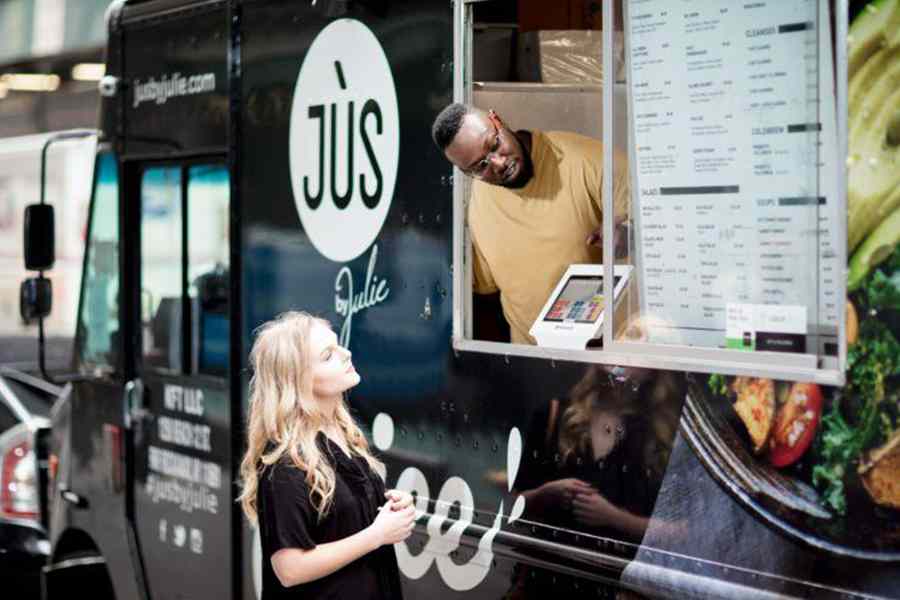
A kitchen prep list is a list of tasks that a restaurant kitchen needs to complete before opening to the public. It is the most crucial point of work for every cook in your kitchen—an effective prep list sets your team up for success. A poorly made prep list results in inefficiencies for your team and can hinder or take away from the guest experience.
In this article, I share how to write an effective prep list and why an effective one is vital to your restaurant’s success.
Key Takeaways:
- Restaurant prep lists help organize the tasks to be done before service in an efficient and easy-to-use manner.
- Prep lists help reduce food and labor costs while also providing structure for different workflows in your kitchen.
- A prep list needs to be easy to follow and should give clear expectations on what tasks need to be accomplished by each cook.
What Is Kitchen Prep?
Kitchen prep covers the tasks before service, allowing for dishes to be created and sent out to guests. It is also called “mise en place,” meaning ingredients and recipes are “put in place” ahead of time.
Kitchen prep work is outlined in a kitchen prep list—a printed sheet that cooks can use as a guide before and throughout service. It contains food items, quantities, and par levels. A par level is the set amount required of a recipe or ingredient to be able to last through service.
Kitchen Prep List Examples
Your restaurant prep list needs to be easy to create, read, and edit per kitchen station. The most successful kitchen prep lists create an organized list of tasks, often laid out in order of importance or length. The lists you create should be easily accessible to your staff and should keep them updated on the progress they are making toward finishing them.
A prep list like this gives your staff clear information on how to hit their par level goals. (Source: Webstaurant Store)
Whether you tailor your prep list to a specific station or cook depends on the size of your staff and how much prep needs to be done. While I am a fan of a station-centric prep list, many chefs will give each individual cook in their kitchen a prep list. This breaks down the management chain one step further, allowing for individual monitoring and reliance. This type of prep list shown below can be useful when your kitchen team is small or you are short-staffed.
A position-specific prep list can also be useful. (Source: RestaurantOwner)
Finally, if a kitchen-wide prep list is more your style, you should aim for the design shown in the image below. This lists all the recipes that need to be made for each station, serving as a large map of the workload that the kitchen team as a whole needs to accomplish. While I find this format too broad, some chefs swear by it.
It will be up to you to decide the best format for yourself and how you want to accomplish being ready for service. Our kitchen prep list template above has station-specific and whole kitchen formats.
Creating a kitchen prep list is an art form, as the benefits of it are greatly felt throughout the business. Some of the best chefs I have worked for adhered strictly to their prep list methods. It is almost a religion for some, the strict adherence to such a small yet powerful list of tasks. Below is the way I would suggest creating a prep list in your restaurant.
Step 1: Use Historical Data When Possible
Historical data, even month-to-month and especially around holidays or other major events, is where you should start when planning a prep list. This gives you an idea of exactly what you sold during a specific time frame, letting you make an educated prep list.
A point-of-sale (POS) system comes in handy here. Take Mother’s Day, one of the busiest days of the year for restaurants, for example. If your restaurant has served on Mother’s Day before, you can use your POS data to determine what you sold and how much. The same principle can be applied to changing seasons, major events in your local area, and more.
Let’s say you do not have a POS system that provides this data. You can also look back on your orders from different vendors during the same time period last year to dictate just how much food you brought in. While not as watertight as the POS system data, this can give you a general idea as to what it took to serve your customers during a similar time frame a year ago.
Step 2: Create Par Levels
The next step in creating a prep list is establishing par levels. Establishing par levels can be done by reviewing historical data, talking to your staff, or using your general knowledge of the business. It is important to note that in this step, you are not creating the actual amount of prep for each recipe but rather the ideal level of prep each component of your menu should be at.
This task can be done at the end of a night’s service or the morning of service but needs to be done before any work is started. For me, I would unlock the restaurant, ensure everyone was clocked in and equipment was turned on, and then work on the prep list.
If you want a foolproof system, I suggest having par levels set out for each day of the week. This creates a baseline, tailored to the specific day of business you are operating on. With set par levels created, you will then need to take a look and apply data and upcoming events in the business to tweak your specific prep needs. Understanding what each service’s par levels are on each given day can save you time and make writing your prep list that much easier.
Step 3: Assess Current Par Levels
The next step in creating a prep list is to see what you actually have on hand. Depending on your restaurant, some recipes cannot last until the next day. I know many chefs who will make dressings and other items like this fresh every day. But there will be some food items from the day prior that can be used for the next service. Going through and assessing what you currently have on hand and building out your current inventory is key to creating the prep list for that specific day.
Step 4: Write Your Prep List
When writing your prep list, I suggest you go station by station. I am a large proponent of compartmentalizing tasks in the restaurant—breaking larger tasks into groups. This allows me to focus and catch finer details. I say this because, depending on your menu size, the total amount of prep you may have can be quite large. Going station by station lets you tune into what that specific area of your restaurant needs.
When creating your prep list, be sure to talk to your team to see what they may think on certain par levels. For example, maybe the salmon tartare sold like crazy the night before due to nicer weather. The cook on that station may mention this, leading you to increase prep on that menu item so that you can stay ahead and not 86 it off of your menu.
Writing the list is basically filling in the gaps of your par levels. Say your par level is four half hotel pans of washed gem lettuce, and you have none. Then, the prep for that is to make four half hotel pans of washed gem lettuce. Or say you need five deli containers of demi, and you have two on hand. Then, three more containers of demi should be prepped for the day. This is how you write out a kitchen prep list.
How to Use a Kitchen Prep List
Now that you have written out the prep list, it is time to use it to get ready for the night ahead. It is very valuable to not only know how to write a prep list but also how to use it. Below are the steps to take.
Step 1: Organize the Flow of Prep
The flow of prep is the tangible way of getting your prep done inside the restaurant. This refers to the plan you have in place for each team member to accomplish the goal of being ready for service.
When organizing how prep will be accomplished, I suggest starting with longer, more complex tasks. Let’s take stocks, for example. A chicken stock takes hours to make. I would start this and have this working long before I have picked through the micro greens or made a last-minute garlic mayo to serve with french fries.
One aspect of kitchen prep is that some stations may rely on the prep of another station to complete their prep tasks. Let’s go back to that chicken stock. Maybe this is used as a base for a soup that saute cooks are prepping. Or, it is used to braise the chicken thighs the grill cooks are responsible for. This is a key item that many stations will use, so being sure to mark this as a recipe that must be prepped first is key. Plan out the items needed throughout the kitchen and in each station, identify any overlap, and build your plan from there.
Step 2: Communicate & Delegate
Next, communicate to your team about the prep they are responsible for. Communicating to the broader team about their roles in the prep list and how you expect it to flow is a crucial step. I am a big fan of a quick, morning meeting where I can address the team and relay the most important items of prep to get done to get the business ready for that day’s service.
During this time, you can also address any concerns from the night prior. Perhaps the dessert station ran out of cheesecake too early, or you had to 86 a key pasta dish. This is the time to find out this information by communicating with your team during the delegation process.
Step 3: Check In on Progress Regularly
The point of kitchen management is to manage effectively through both prep and service. Regular check-ins with the different stations during prep will allow you to track progress, taste recipes being made, determine where labor may be needed, and ensure everything is done on time.
It is a good idea to build a culture of teamwork so that a variety of cooks within your team can prep. By having staff help their colleagues with prep on busy days, you can be set for service while also allowing the staff to cross-train into different roles.
Step 4: Conduct a Final Check Before Service
A final check of prep before service is always warranted, as you never want to go into a dinner or lunch service underprepared. I would conduct this check about one hour to 45 minutes out, focusing on any last-minute tasks and seeing if any crucial pieces of prep are not completed. It will be at this time when you can really focus your staff on a certain task if something was missed or if a staff member fell behind on their responsibility. The final check gives you a general sense of the readiness of your kitchen.
Step 5: Conduct a Post-service Check
The last part that creates a circular process when managing the prep list is to take an inventory of your par levels post-service. This information will allow you to update historical data and guide you on what par levels you should aim for on the next day and similar days to the one you just cooked through.
A post-service check acts as an assessment of your prep list, showing you where tweaks in both the flow of process and overall par setting can be made. This final check also gives you a head start on what your prep list will look like the next day and can let you plan ahead so that your team hits the ground running when they come into the restaurant ready for work.
Kitchen Prep List Benefits
The benefits of writing and executing a kitchen prep list extend into all aspects of your business. Efficient and properly organized prep lists let your team function at a high level and, with that, allow them to create their best work. While there are many benefits, here are the top three:
Ensures Better Organization Before & During Service
The obvious benefit to a kitchen prep list is that it provides a structure to a cook’s day, allowing them to work efficiently and be organized for serving customers. A prep list also ensures that you have enough product during service. Having to make recipes during a busy rush is a nightmare for kitchen staff, especially when low staffing is an issue. A prep list offers the opportunity for the station a cook is working at to be fully stocked and ready for the rush ahead.
Beyond this, prep lists help quantify each person’s workload in the restaurant. Some stations may experience heavier prep than others due to the demands of the business. Building out prep lists allows you to delegate labor to the areas where the needs of the business are the greatest. This useful bit of information can change the way you utilize your staff to be ready to serve food to your customers.
Helps Maintain Food Cost
Another key advantage to a prep list is that it sets a par, to which a cook must prep recipes accordingly. Suppose you are just blatantly asking your team to prep food for service without an understanding of the amount needed per recipe. In that case, you run the risk of severely over-prepping or under-prepping said recipes.
If a recipe is prepped past the amount you actually need, you are likely throwing that recipe away and creating waste. In a restaurant business where margins are tight, it is unacceptable to have waste that is so easily generated due to a lack of organization.
When I write a prep list, I use the data from my POS systems or general historical data to create par levels for every single recipe on each station. The pars you create will fluctuate, as you may need six more pans of ranch dressing on Saturday than on Monday. By building out fluid and accurate prep lists, you can achieve par levels that help you only utilize what is needed. This focus on efficiency and waste reduction is a key contributor to lowering the food cost in your restaurant.
Learn more about food cost and how to calculate and control it.
Clearly Lays Out Project Timelines
A key sign that a kitchen is using a prep list ineffectively is when you see multiple recipes being worked on into service or missing altogether. A prep list should be more than just items being made, but also a soft roadmap for how all of these items will be completed before service.
For example, say you have blanching french fries on your list, along with small knife cuts to be used for service later on. The smart way to accomplish these tasks would be to blanch the fries first, and while waiting for them to be done, work on the knife cuts. If you simply did the knife cuts first and then the fries, then you would be behind, and the tasks would take you much longer to complete.
This point is especially important for new staff. When you run a very experienced staff, they may not need specific direction as to what they need to do first. However, staff that is not as experienced in kitchen prep do need a roadmap, and this is where the prep list can play a part. Not only can you write the recipes that need to be done on the list, but you can also structure the list to break down how to finish all tasks required in time for service.
Frequently Asked Questions (FAQs)
Restaurant prep lists are a useful tool in almost all professional kitchens. Below are some of the most frequently asked questions regarding kitchen prep lists.
At the bare minimum, each station needs a prep list. So, this means grill, saute, garde manger, and any other station in your kitchen needs its dedicated list. I would then discuss with the cooks delegated to each station how they want to divvy up the workload, as this allows for teamwork. For newer staff, I do recommend doing the extra step of personalizing the prep list for each cook to get the best results.
When created well, a kitchen prep list ensures that the sole focus is on the guest during a service. If you have ever been behind on prep during a busy dinner service, you will know that it is one of the worst feelings in the world. If you are spending time and effort prepping food during the time you are serving guests, then you cannot give your full attention to the task at hand. This can lead to poor food quality and a lot of waste. A prep list ensures your team is ready to serve your customers to the highest degree of quality.
The best way to create a restaurant prep list is to use historical data, or data from a POS system, to help establish par levels for your prep. After doing this, delegate the tasks and ensure they are done in the most organized manner. Using your knowledge of the business and your kitchen’s workflow and establishing this in a prep list is the best way to get the best results out of your team.
Bottom Line
A kitchen prep list is one of the most useful tools for organizing your staff. The prep list determines the day’s workload and structures it efficiently and productively. A well-made prep list used regularly helps reduce food and labor costs while also ensuring your services for customers run smoothly. When prep lists are effective, they allow your team to focus solely on serving your customers, which in turn, creates a high-quality experience for your guests to enjoy.





